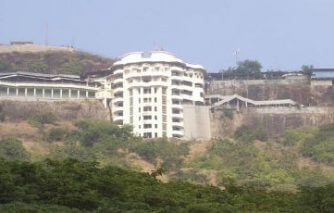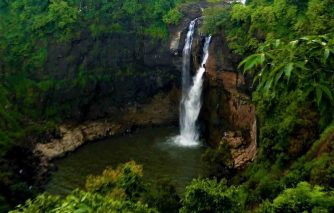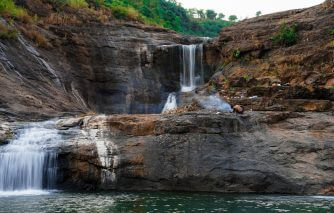Palghar
Introduction to Palghar District
Palghar is a significant town in the Konkan division of Maharashtra, India. It serves as a municipal council and is strategically positioned within the Mumbai Metropolitan Region. Since 2014, it has been the administrative headquarters of the newly formed Palghar district. The town holds great importance in the Western Line of the Mumbai Suburban Railway, forming part of the bustling Mumbai-Ahmedabad rail corridor.
The district is home to various communities, with predominant groups including Kunbi, Mangela, Vaity, Macchimar, Bhandari, Warli (Adivasi), Katkari, Malhar Koli, Vanjari, Vadval, and Mali (Sorathi). Among these, the Warli community is renowned for its artistic contributions. Warli paintings, which date back over a millennium, are internationally recognized and celebrated. The famous Tarpa dance, performed during cultural festivals, is also a significant part of the Warli heritage.
Fishing plays a crucial role in the economy and daily life of Palghar’s residents. It not only serves as a major occupation but also holds cultural significance, especially in coastal areas. The district’s economic activities are closely tied to its geographical location and traditional practices, making Palghar a unique blend of history, culture, and economic development. Palghar continues to grow as a significant administrative and cultural hub while preserving its historical roots and traditions.
The History of Palghar District
The establishment of Palghar as an independent district was officially announced on August 1, 2014, by the Maharashtra state government. It became the 36th district of Maharashtra, carved out from the Thane district. Palghar district carries a rich historical legacy, particularly in Vasai, Palghar, and Jawhar talukas. Vasai taluka was historically dominated by the Portuguese until it came under the control of the Marathas. During the reign of the Peshwa Empire, Chimaji Appa successfully captured Vasai and hoisted the Maratha flag.
Palghar also played a significant role in India’s freedom movement. During the Quit India Movement in 1942, five courageous martyrs from Palghar sacrificed their lives for the nation. In their honor, a memorial named ‘Panch Batti’ was constructed in Palghar city. Earlier, in 1930, during the Salt Satyagraha movement, several activists from Vadarai to Satpati actively participated in the struggle against British rule. In Satpati, foreign goods were completely banned and destroyed as a form of protest.
Top Tourist Attractions in Palghar
Palghar district has a rich and diverse historical and cultural heritage, shaped by centuries of interactions between various ruling powers. The numerous forts scattered across the region stand as testaments to its strategic significance, having witnessed conflicts between the Mughals, Marathas, Portuguese, and British. The district’s natural beauty, with its beaches, and waterfalls, further enhances its appeal as a significant cultural and tourist destination.
Religious Sites
- Maa Jivdani Temple is a significant religious landmark located on Jivdani Hill in Virar. It is the only temple dedicated to Goddess Jivdani and is situated at an altitude of 1375 steps above ground level in the eastern part of the city. This 150-year-old temple attracts thousands of devotees, especially on Sundays and during festivals. At the foothills of the temple, the Papadkhandi Dam served as a major source of fresh water for the region.
- The Mahalakshmi Temple in Dahanu is dedicated to Goddess Mahalakshmi, who is considered the Kuldaivata (patron deity) of the tribal communities. During festive periods, the tribals celebrate by performing the traditional Taarpa dance. One of the major annual events held here is the Mahalakshmi Yatra, a 15-day festival that begins on Hanuman Jayanti and attracts numerous devotees.
Beaches
- Kelva Beach offers a stunning and unspoiled stretch of coastline that has become a favored retreat for weekend visitors from Mumbai. Stretching approximately 8 kilometers, this beach isn’t widely advertised as a top tourist spot, yet it attracts a growing number of locals during weekends, reflecting its increasing allure.
- Dahanu Bordi Beach, situated in the Palghar district, boasts a 17-kilometer-long pristine shoreline. Renowned for its natural beauty, Dahanu is also celebrated for its expansive chikoo orchards. Summers are warm here, but the soothing sea breeze offers relief. This area is enriched by a remarkable Zoroastrian temple, known for safeguarding a sacred fire that has been continuously burning for nearly a millennium, enhancing its cultural significance.
- Suruchi Beach, nestled in Vasai Nagar, is eco-friendly and impeccably maintained, making it perfect for those looking to unwind from everyday stress. Its stunning sunrise and sunset vistas draw young adventurers and tourists year-round. Whether it’s for a morning jog, an evening walk, or a full-day excursion, Suruchi Beach promises tranquility and scenic beauty.
- Aalewadi Beach, situated close to the Boisar industrial zone in Palghar district, is a promising spot for tourism. It attracts visitors all year round, and government efforts have been made to boost its attractiveness. The beach boasts a pristine shoreline, horse and horse-cart rides, excellent dining establishments, affordable hotels and resorts, along with thoughtfully designed seating areas for tourists, creating a welcoming and relaxed environment.
Forts
- Arnala Fort
Also called “Jaldurg” or “Janjire Arnala,” this coastal fort has a long history of being ruled by multiple empires, including the Mughals, Marathas, Portuguese, and Peshwas. Built in 1516 by Mahmud Begda, the fort features several temples dedicated to Tryambakeshwar, Bhavani Mata, Kalika Mata, and Mahadev. Surrounded by water, it holds both historical and religious significance. - Vasai Fort
Once the headquarters of the Portuguese in North India, Vasai Fort was a crucial naval base and shipbuilding center. It had a 4.5 km-long stone wall with 11 bastions, showcasing its strategic importance. The fort is also historically notable for the Treaty of Bassein (1802), which played a significant role in shaping the Maratha Confederacy. - Gambhirgad
Situated near the Gujarat border, Gambhirgad Fort has a rugged and “serious” ambiance. It has minimal structures on its plateau, except for a temple and a water tank. However, it offers breathtaking views of the Mahalakshmi Pinnacle and the nearby Asheri and Adsul forts, making it a great spot for trekking enthusiasts. - Tarapur Fort
Currently maintained by the Chorge family, Tarapur Fort was once gifted to Vikaji Mehrji by the Peshwas. The fort has wells, gardens, and historical remnants of a church and monastery. It also bears the marks of a Maratha attack led by Chimnaji Apa, who successfully breached its bastion and curtain walls. - Kaldurga
At an elevation of 1550 feet, Kaldurga Fort is uniquely shaped like a rectangle and is surrounded by dense forests. The fort has an interesting structure, being divided into two sections—one above the rectangular rock and the other below it. The area is home to tribal communities, adding to its cultural significance. - Kelva Fort
Built by the Portuguese, Kelva Fort stands near Kelva Lake and was once used by Chhatrapati Shivaji Maharaj. Completely surrounded by water, the fort offers stunning panoramic views of the natural landscape, making it an attractive site for history buffs and nature lovers alike. - Kamandurg
Located in Vasai, Kamandurg Fort is known for its challenging access, requiring visitors to cross four water streams, including a 40-foot-wide third stream. The fort is densely forested and features five ancient caverns. It is inhabited by the Adivasi Warli community and offers a scenic view of Vasai Creek. - Shirgaon Fort
Once a key vantage point for Chhatrapati Shivaji Maharaj, Shirgaon Fort was later renovated by the Portuguese, who expanded its area while preserving its original brick and red stone structure. Now in ruins, the fort still has hidden caves and a rare multi-branched palm tree, adding an element of mystery to its historic charm.
Other attractions
- Jawhar Rajwada, also known as the “Mahabaleshwar of Palghar District,” is a beautiful hill station with a pleasant climate, thick forests, and rich Warli paintings. It is an ideal place to experience the tribal way of life. The best time to visit is during the monsoon, when the entire region is covered in a thick fog, creating a mystical atmosphere.
- The Kalmandavi Waterfall in Palghar district is an undiscovered gem. This multi-tiered waterfall plunges 100 meters and is encircled by challenging landscapes. Situated close to Mumbai, it draws adventure enthusiasts for activities like trekking, swimming, cliff jumping, rock climbing, and rappelling.
The Famous Warli Art
Beyond military history, Palghar is also known for its vibrant tribal culture, particularly in Jawhar, where Warli paintings highlight indigenous artistic traditions. In regions predominantly inhabited by Warli, Katkari, Malhar fishermen, and other tribal groups, these communities hold a deep respect for their cultural heritage. The Warli painting and the tarpa dance are emblematic of their social identity.
Warli art has been preserved since ancient times, with evidence of its existence dating back over 1100 years. This artistic tradition illustrates tribal customs, daily activities, and significant life events. Scenes depicting marriage, dance, and the wonders of nature are captured exquisitely.
The creation of these artworks involves natural materials instead of chemical colors. Elements such as soil, rice flour, plant dyes, and bamboo brushes are utilized to bring these images to life.
These paintings vividly portray the lifestyle of tribal peoples and have gained popularity both in India and internationally.
Best Time to Visit Palghar
Here is the table summarizing the best time to visit Palghar district:
| Season | Time Period | Key Features | Ideal Activities |
| Winter | October – March | Pleasant weather with cool temperatures and less humidity is ideal for sightseeing and outdoor activities. | Exploring forts, temples, and beaches. |
| Monsoon | June – September | Lush greenery and beautiful landscapes, but heavy rainfall can disrupt travel plans. | Best for nature lovers, but caution is needed. |
| Summer | April – May | Moderate season with fewer crowds, but temperatures can get quite hot. | Not ideal for outdoor activities, but less crowded. |
Why Palghar Should Be on Your Travel Bucket List
Palghar, a hidden gem in Maharashtra, offers a unique blend of history, culture, and natural beauty. Whether you’re an adventure seeker, a history enthusiast, or someone looking to experience vibrant tribal traditions, Palghar has something for everyone. From ancient forts and serene beaches to sacred temples and the world-famous Warli art, the district is a treasure trove waiting to be explored.
What makes Palghar truly special is its deep-rooted tribal culture, exemplified by the Warli community’s traditional art and dance forms. The internationally recognized Warli paintings narrate stories of everyday life using eco-friendly materials. Whether you’re looking for history, spirituality, adventure, or cultural immersion, Palghar is a destination that promises an unforgettable travel experience.
Travel Essentials
Here are the travel essentials one should know
Weather
29 - 41°C
Ideal Duration
1 - 3 days
Best Time
November to Febuary
Planning a Trip?
Know how to reach
Top Attractions
Discover the beauty and culture of Maharashtra through our curated experiences

Kelva Beach
A serene beach known for its golden sands and tranquil ambiance, ideal for relaxation and water sports.

Shirgaon Fort
An ancient fort with historical significance, offering panoramic views of the surrounding landscape.

Vasai Fort
A historic fort built by the Portuguese in the 16th century, featuring intricate architecture and stunning views of the Arabian Sea.

Kaldurg Fort
An ancient hill fort known for its trekking trails and panoramic views of the surrounding hills and valleys.

Jivdani Temple
Maa Jivdani temple is located on the Jivdani hill in Virar. it is the most significant landmark in Virar located on the mountain. it is famous throughout the country for its only temple of Goddess Jivdani which is located around 1375 steps above the ground level, atop a hill in the eastern part of the city.

Hiradpada Waterfall
Hiradpada is one of the 109 villages in Jawhar. The village is famous for its waterfall, which is just 0.5 km away from the village. The village has also gained popularity for the native tribals’ unique Dhol dance, Tarpa dance and Warli painting.

Kalmandavi Waterfall
The fascinating Kalmandvi Waterfall lies about 8km south of Jawhar town. It’s a beautifully cascading 100-meter-deep waterfall. Its rocky area makes for a perfect spot for adventure sports such as Trekking, Rock Climbing and Rappelling. A miraculous quality of this enthralling fall is that it flows throughout the year.

Hanuman Point
An ancient Hanuman mandir of great religious importance gives it its name, Hanuman Point. Another point that lures tourists is the astonishing view of Jaivilas Palace. The Maruti or Hanuman mandir is known as Katya Maruti mandir. During the day, the historical fort of Shahapur Maholi is visible from this point. A beautiful green 500ft deep valley known as Devkobacha Kada unfailingly takes the attention of the tourists.

